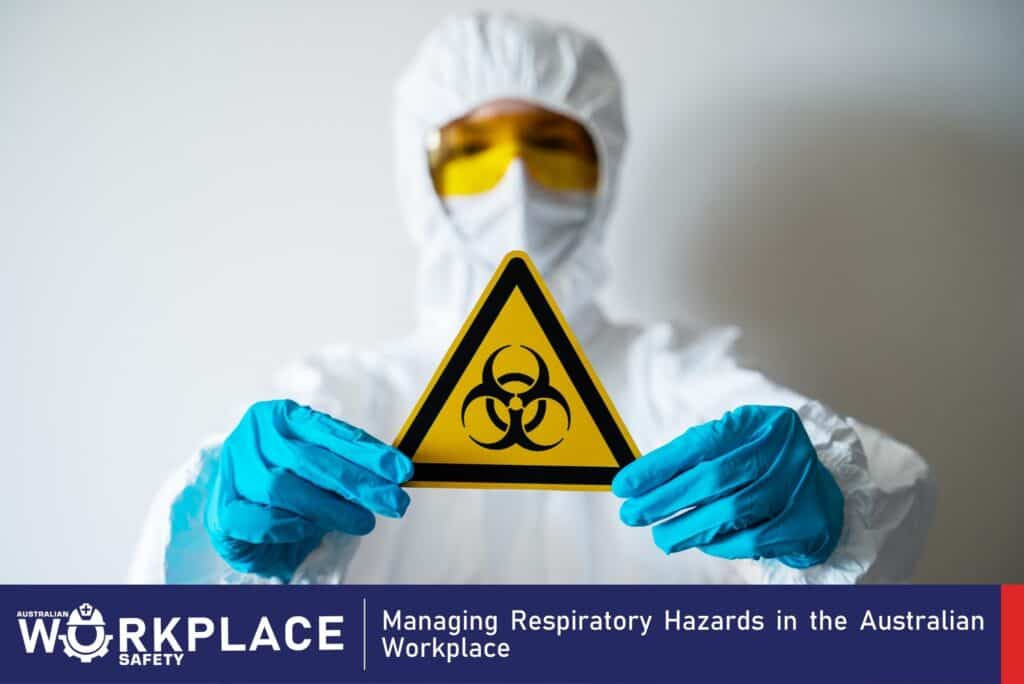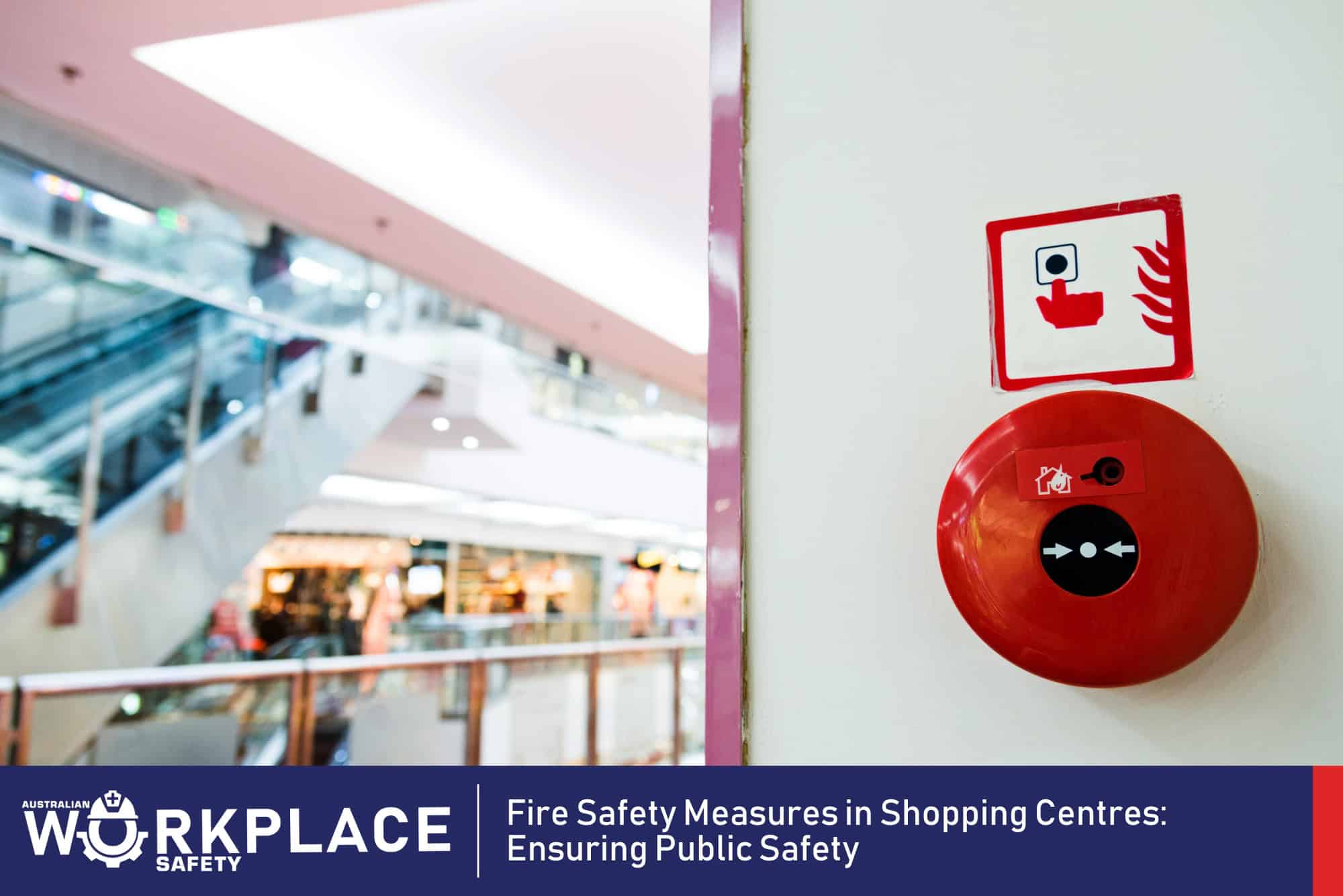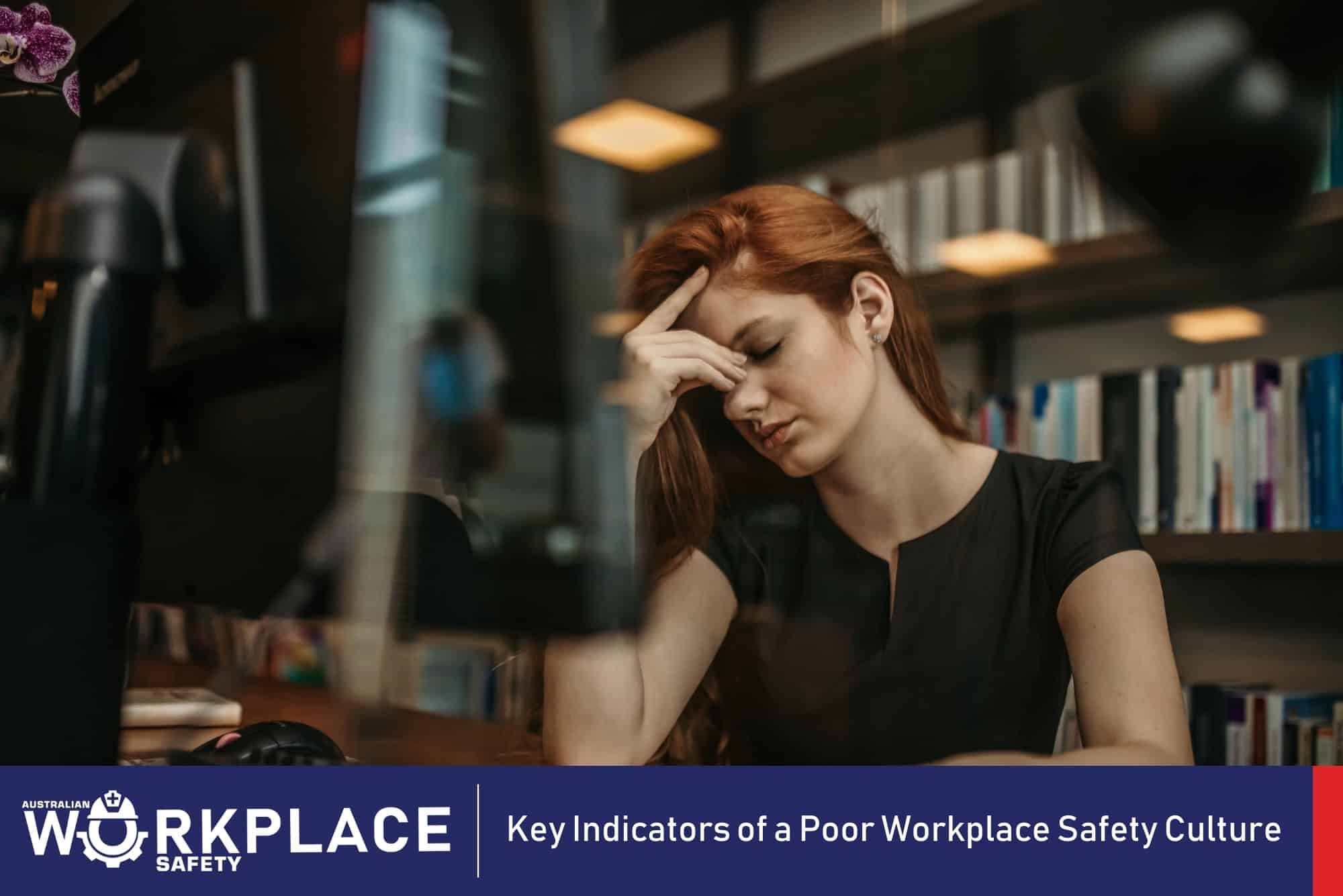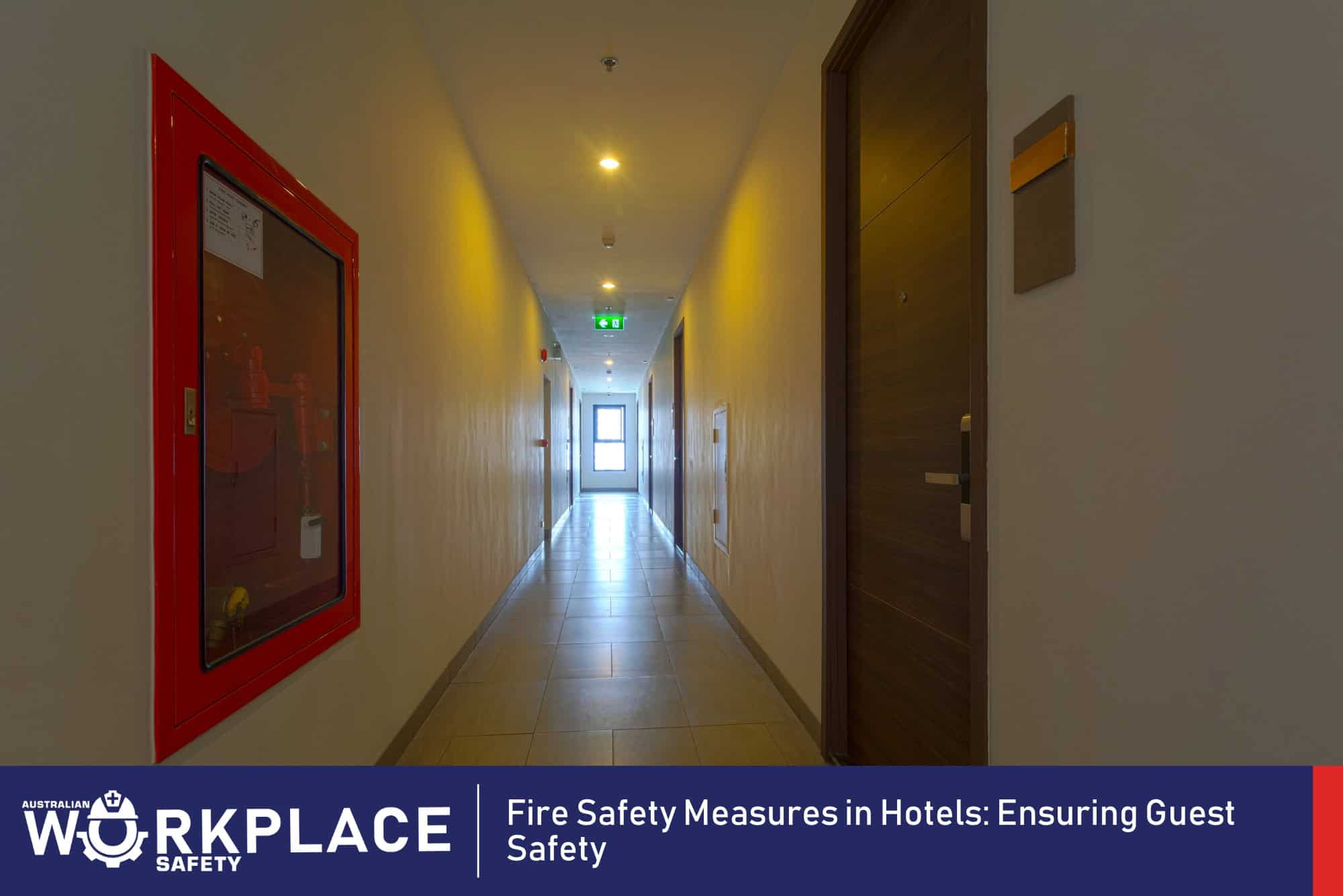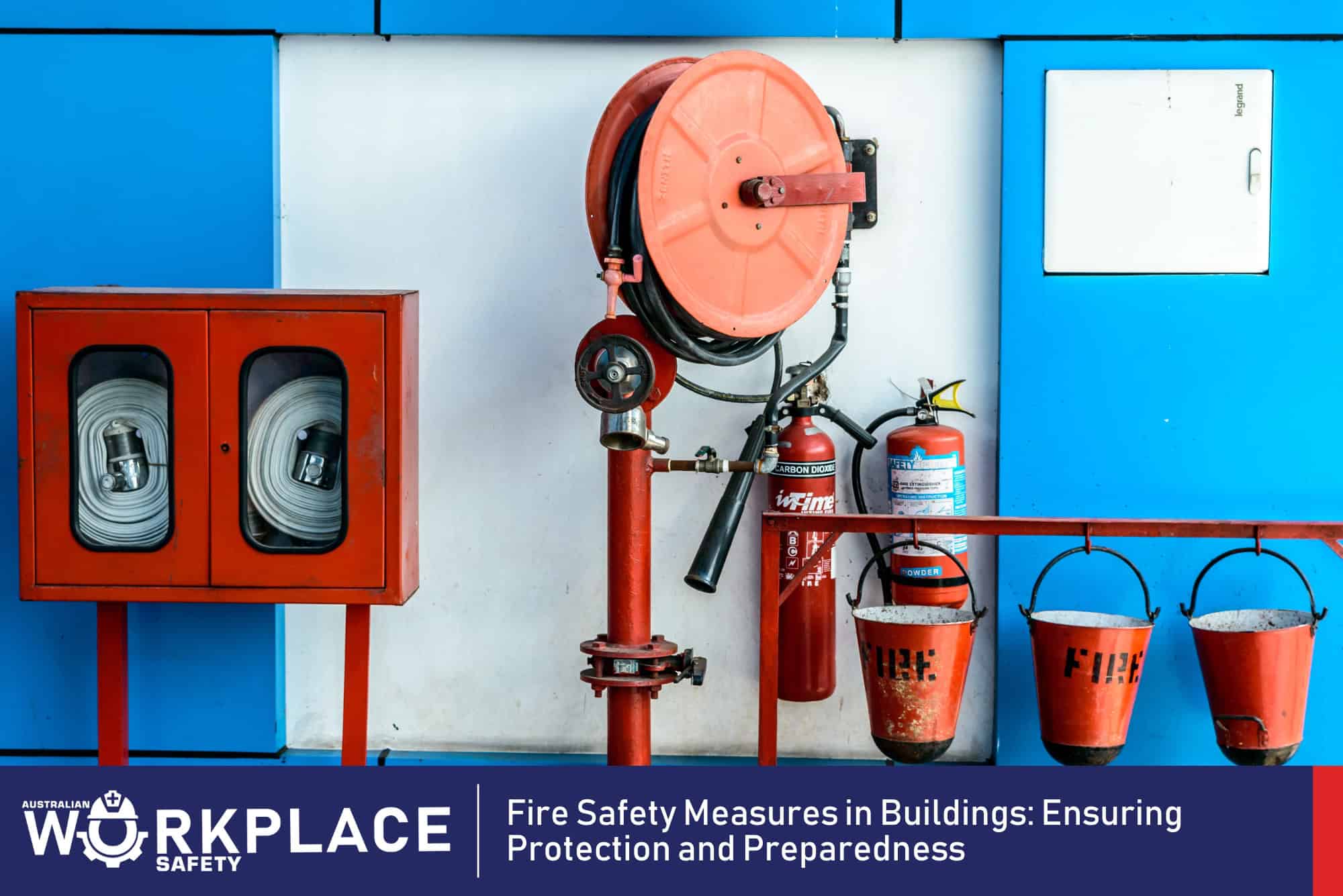Are you struggling to manage respiratory hazards in your Australian workplace? Understanding the confusion – we, too, have wrestled with identifying and mitigating these risks. In our comprehensive guide, we’re sharing expert insights grounded on Australia/New Zealand Standards on tackling this issue effectively.
Ready to breathe easier? Let’s dive right in.
Identifying and Assessing Respiratory Hazards in the Workplace
Taking action to eradicate hazardous substances within the Australian workplace is a crucial first step for respiratory hazard management. These could range from harmful dust particles in a construction site, toxic fumes in manufacturing plants, or even mould spores present in an office environment.
The primary aim should always be to eliminate these risks completely where feasible.
In practice, this means replacing physical processes that generate air contaminants with less risky alternatives. For example, we might swap abrasive blasting with high-pressure water or use vacuum drills to suppress dust at its source.
This approach not only safeguards workers’ health but also promotes a more productive and safer work environment as mandated by the AS/NZS 1715 standard and outlined in the Victorian Respiratory Protection Program and Respiratory Protection Program Manual.
Substituting hazardous substances
In our journey towards a safer Australian workplace, one vital step is substituting hazardous substances with less harmful alternatives. It’s not just about compliance with the AS/NZS 1715 standard; rather it’s about genuinely safeguarding the health and wellbeing of our workforce.
In line with this, we could consider switching to non-toxic cleaning products or seeking out materials that release fewer toxic fumes during manufacturing processes.
The effectiveness of these substitutions, however, would greatly rely on meticulous assessment and constant monitoring. It demands our commitment to thoroughly evaluate potential replacements for risks and hazards even before their introduction into the production cycle.
Equally pertinent is carrying out regular reviews after substitution to ensure ongoing safety.
It might sound complex but trust us, in our experience at australianworkplacesafety.com.au, once you navigate past initial barriers and resistance to change – be they financial or otherwise – you’ll find this approach leads not only towards reduced respiratory hazards in your Australian workplace but also improved overall work environment morale.
Fewer illnesses mean more productivity – a win-win situation if there ever was one!
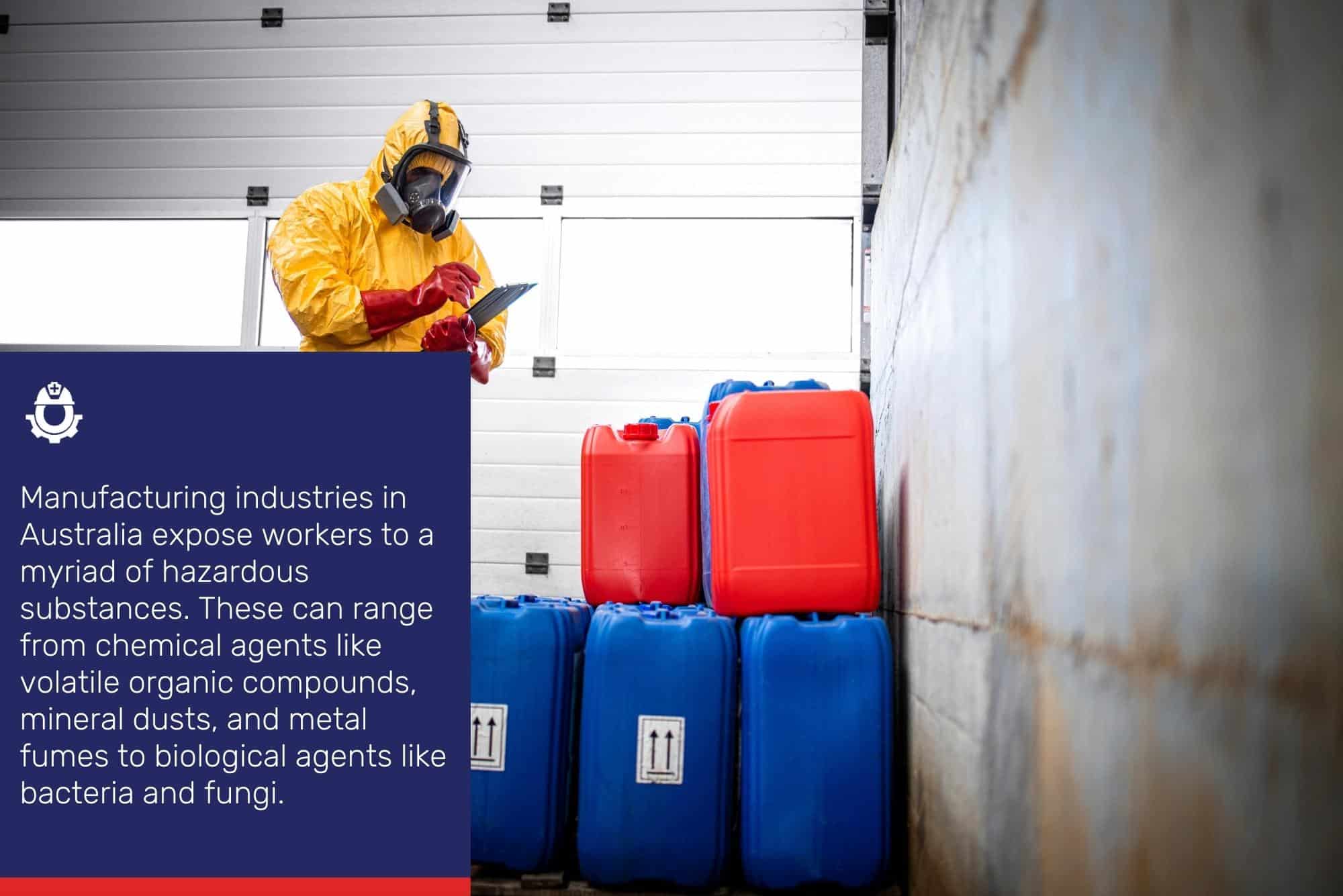
The Role of Hazardous Substances in Manufacturing Industry
Manufacturing industries in Australia expose workers to a myriad of hazardous substances. These can range from chemical agents like volatile organic compounds, mineral dusts, and metal fumes to biological agents like bacteria and fungi.
This exposure may put workers at risk for a variety of respiratory diseases such as lung cancer, chronic obstructive pulmonary disease (COPD), asthma, or other debilitating illnesses.
Our role revolves around the understanding of these risks and crafting effective mitigation strategies. We abide by the guidelines set forth by Australian/New Zealand Standards specifically addressing personal respiratory protection and risk management in the workplace.
Not only that, but we also adopt valuable lessons learnt from programs such as The Victorian Respiratory Protection Program which assists healthcare workers against similar challenges.
Mitigation of hazards in our workplaces involves multiple layers: elimination or substitution wherever possible; isolation techniques; engineering controls like ventilation systems; administrative controls including enforcing safety protocols; and providing necessary training for using respiratory protective equipment effectively.
Our approach is based on specific risks associated with each manufacturing environment – no one-size-fits-all solutions here at australianworkplacesafety.com.au! We aim to provide safe workspaces where every worker’s health is safeguarded against potential threats lurking in their immediate surroundings.
Isolation techniques
Isolation techniques are an essential part of managing respiratory hazards in the workplace. They involve physically separating workers from hazardous substances to reduce their exposure and prevent potential health risks.
By implementing effective isolation techniques, employers can create a safer work environment for their employees.
One commonly used isolation technique is enclosure or containment. This involves enclosing the source of respiratory hazards, such as dust or fumes, within a designated area using barriers or enclosures.
This helps prevent the release of hazardous substances into the surrounding air and minimises worker exposure.
Another isolation technique is ventilation control. This involves using mechanical systems to remove airborne contaminants and maintain clean air in the working areas. Properly designed ventilation systems can effectively dilute and remove hazardous substances, preventing them from accumulating and posing a risk to workers’ respiratory health.
Engineering controls
Engineering controls are an essential aspect of managing respiratory hazards in the Australian workplace. These controls involve modifying or redesigning work processes and equipment to minimise exposure to hazardous substances.
By implementing engineering controls, we can eliminate or reduce the risks associated with respiratory hazards. One effective means of engineering control is the use of local exhaust ventilation systems. These systems help capture and remove contaminants at their source, preventing them from entering the worker’s breathing zone.
By effectively controlling dust, fumes, or airborne particles through these systems, we can greatly reduce respiratory hazards in the workplace.
Another important engineering control measure is proper maintenance and inspection of machinery and equipment. Regular maintenance ensures that any potential leaks or malfunctions are identified and rectified promptly, minimising exposure to harmful substances.
Additionally, using enclosed systems for processes that generate hazardous airborne particles can further protect workers from respiratory hazards.
Administrative controls
In addition to eliminating or substituting hazardous substances, another crucial aspect of managing respiratory hazards in the workplace is implementing administrative controls. These measures involve establishing policies, procedures, and protocols that help minimise employees’ exposure to respiratory hazards.
One effective administrative control is proper training and education. By providing comprehensive training programs on respiratory safety, employers can ensure that workers are aware of the risks associated with their job tasks and understand how to use personal protective equipment correctly.
This includes educating employees about the different types of respirators available for specific work environments and explaining the importance of fit testing.
Implementing a robust monitoring system is also important as it allows employers to continually assess air quality within the workplace. Regular monitoring helps identify any potential airborne contaminants or hazardous substances that could pose a threat to employee health.
Establishing clear communication channels between management and employees is essential in promoting a safe work environment. Employers should encourage open dialogue by providing multiple avenues for workers to report concerns or seek assistance related to respiratory hazards.
This fosters a culture of safety where everyone feels comfortable speaking up about potential risks they may encounter on the job.
Use of respiratory protective equipment
To ensure the safety of workers in Australian workplaces, it is crucial to understand the proper use of respiratory protective equipment (RPE). RPE plays a vital role in shielding individuals from respiratory hazards, such as hazardous substances and airborne particles.
As outlined in the Australian/New Zealand Standards, RPE should be selected based on its purpose and compatibility with the specific workplace environment. Proper training on how to effectively use RPE is also essential.
Regular maintenance and fit checking are key to ensuring that the respirators remain functional and offer optimum protection.
In healthcare settings, for example, organisations like NSW Ambulance have implemented comprehensive Respiratory Protection Program Manuals that provide guidance on managing respiratory hazards.
These manuals detail procedures for assessing requirements of RPE, including selection criteria and fit-testing techniques. It’s important to note that different types of respirators exist—such as particulate filters for capturing airborne particles or gas/vapor filters for chemical protection—and their appropriate usage depends on factors like hazard type and concentration levels.
Types of Respirators
In the workplace, there are various types of respirators that can provide protection against respiratory hazards. From particulate filters to gas and vapor filters, it’s crucial to choose the right respirator for each specific situation.
To learn more about these different types and how they can keep you safe, continue reading on our website. Stay informed and stay protected!
Particulate Filters
When it comes to managing respiratory hazards in the Australian workplace, one important tool is the use of particulate filters. These filters are specifically designed to remove harmful particles from the air we breathe.
They can be particularly useful in industries where dust and other airborne particles are a common hazard.
Particulate filters work by trapping solid or liquid particles suspended in the air, such as dust, smoke, or mist. They come in different classes based on their filtration efficiency, ranging from P1 (low efficiency) to P3 (high efficiency). The higher the class, the finer the particles that can be filtered out.
One key aspect of using particulate filters is ensuring they fit properly. This is crucial for achieving maximum protection against respiratory hazards. Fit testing should be carried out before using a particulate filter to ensure it forms an effective seal around your face without any gaps.
Gas and Vapor Filters
Gas and vapor filters are essential respiratory protection equipment for workers in industries where hazardous gases and vapours are present. These filters are designed to remove specific contaminants from the air, ensuring that workers breathe in clean and safe air.
Gas and vapor filters work by absorbing or adsorbing the harmful gases or vapours, preventing them from entering the respiratory system. They come in a variety of types, each suitable for different types of contaminants.
For example, organic vapours require activated carbon filters, while acid gases need specialized chemical absorption filters.
The AS/NZS 1715 standard provides guidelines on selecting the right gas and vapor filter for different workplace environments. It is important to consider factors such as the type and concentration of contaminants present, duration of exposure, temperature conditions, and worker comfort when choosing these filters.
Regular maintenance and replacing worn-out or saturated filters is crucial to ensure their effectiveness.
Combined Particulate and Gas/Vapor Filters
In the Australian workplace, managing respiratory hazards is crucial for ensuring the health and safety of workers. When it comes to respiratory protective equipment (RPE), one type that is commonly used is combined particulate and gas/vapor filters.
These filters are designed to protect against both solid particles and harmful gases or vapours.
Combined filters work by trapping particles such as dust, smoke, or mists, as well as filtering out hazardous gases and vapours from chemicals or solvents. This makes them versatile and suitable for a wide range of industries where workers may be exposed to various respiratory hazards.
In manufacturing industries where there may be airborne contaminants like metal fumes or volatile organic compounds (VOCs), combined filters provide effective protection.
They play a vital role in preventing inhalation of these hazardous substances, reducing the risk of respiratory illnesses.
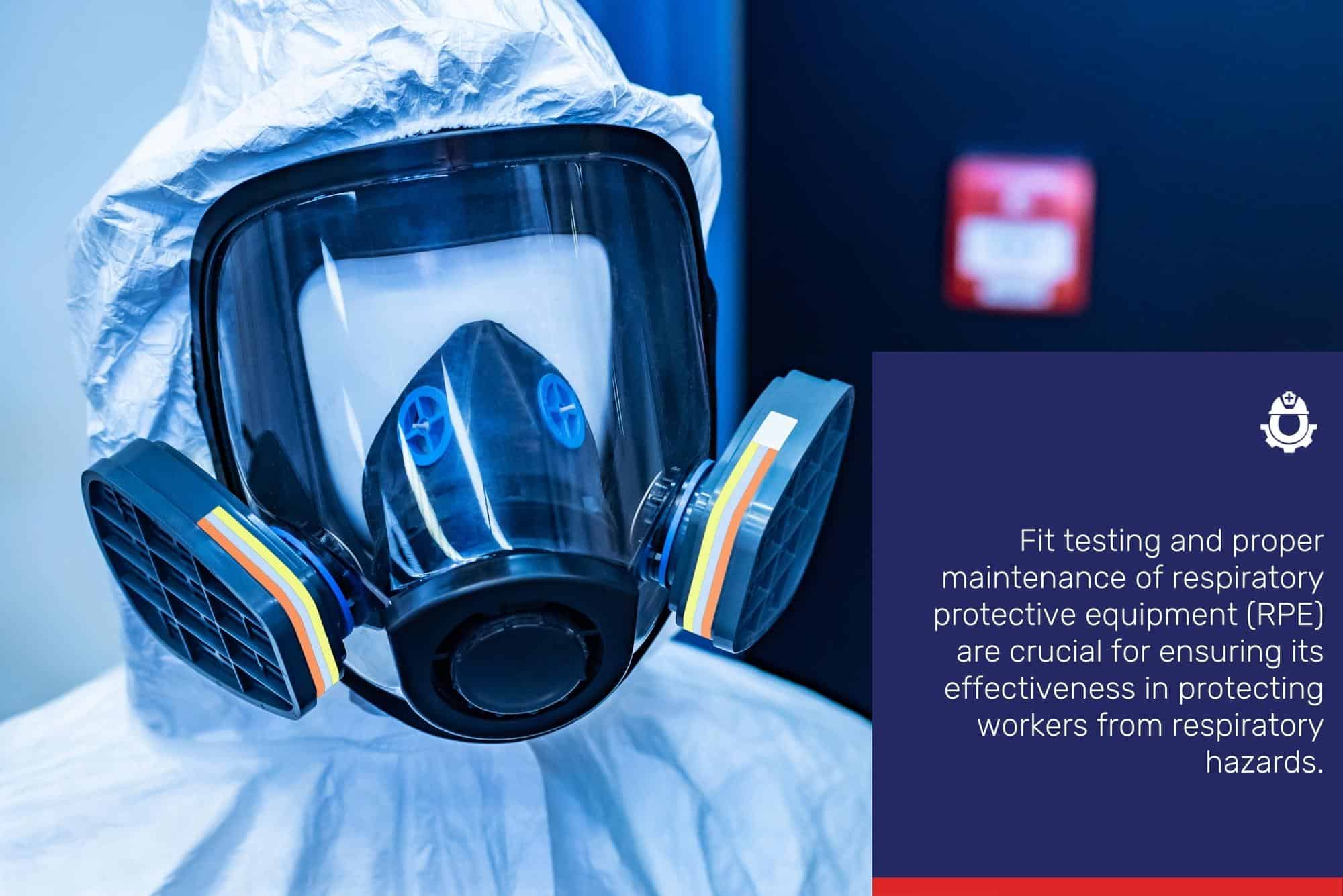
Fit Testing & Maintenance of Respiratory Protective Equipment
Fit testing and proper maintenance of respiratory protective equipment (RPE) are crucial for ensuring its effectiveness in protecting workers from respiratory hazards. Australian standards, such as AS/NZS 1715, outline the requirements and procedures for fit testing and maintenance of RPE to ensure a secure facial fit and supply clean breathing air.
Regular fit-checking is necessary to verify that the RPE maintains an adequate seal, especially for disposable and re-usable respirators. By prioritizing these measures, workplaces can minimise the risk of respiratory illnesses caused by hazardous substances.
Facial fit
Facial fit is a crucial aspect when it comes to respiratory protective equipment (RPE). It ensures that the respirator fits securely and creates an effective seal around the face, preventing any harmful substances from entering.
A proper facial fit is essential for maximum protection against respiratory hazards in the workplace.
To ensure a good facial fit, it’s important to select a respirator that matches the individual’s face size and shape. Fit testing should be conducted to determine if there are any leaks or gaps between the respirator and the face.
This testing helps identify if adjustments or another type of respirator is needed.
Regular fit-checking is also necessary, especially before entering hazardous areas. This involves performing simple checks like covering the exhalation valve with your hand and exhaling gently to feel for any air leakage.
Fit testing
Fit testing is a crucial step in ensuring the effectiveness of respiratory protective equipment (RPE) in the workplace. It involves checking how well a respirator fits on an individual’s face to ensure a secure seal and maximum protection against respiratory hazards.
Fit tests are typically conducted using specialized equipment and methods to assess factors such as facial fit, leakage, and comfort.
Proper fit-testing is essential because even minor gaps or leaks around the edges of a respirator can compromise its efficiency, rendering it ineffective in protecting against harmful substances.
By conducting fit-tests, employers can identify any issues with RPEs and make necessary adjustments or replacements to ensure the safety of their workers.
It is important to note that fit testing should be done periodically as different individuals may require different sizes or styles of respirators due to variations in facial features. Additionally, changes such as weight gain/loss or dental work can affect the fit of the respirator over time.
Fit checking
Fit checking is a crucial step in ensuring the effectiveness of respiratory protective equipment (RPE). It involves verifying that the respirator fits properly and seals tightly on your face before entering a hazardous environment. This ensures that you are adequately protected from respiratory hazards.
To perform a fit check, start by donning the respirator correctly according to the manufacturer’s instructions. Then, cover the exhalation valve(s) with your hand(s) and exhale gently.
If you feel air escaping around the edges of the respirator, adjust or reposition it until you achieve a proper seal.
Remember, fit checking should be done every time you wear a respirator, even if it’s been previously fitted. Environmental factors such as temperature or facial hair can affect how well the RPE fits over time.
Disposable & re-usable respirators
Disposable and re-usable respirators play a crucial role in protecting workers from respiratory hazards in the Australian workplace. These types of respirators provide a barrier against harmful substances, such as dust particles, gases, and vapours.
Disposable respirators are designed for single-use only and are typically made of lightweight materials that offer comfort and breathability. They are convenient for short-term tasks or when working with hazardous substances intermittently.
On the other hand, re-usable respirators are designed to be used multiple times, which makes them cost-effective in the long run. They often feature replaceable filters or cartridges that can be changed when they become saturated or expire.
Re-usable respirators are commonly used in environments where workers face ongoing exposure to respiratory hazards.
Supply clean breathing air
One crucial aspect of managing respiratory hazards in the workplace is ensuring a supply of clean breathing air. When workers are exposed to airborne contaminants, it is essential to provide them with air that is free from harmful particles and gases.
The Australian/New Zealand Standards outline specific requirements for respiratory protection equipment, including guidelines for maintaining a clean breathing environment. These standards serve as a foundation for selecting and using appropriate respirators and other protective measures.
By supplying clean breathing air, employers demonstrate their commitment to worker safety and well-being. It helps reduce the risk of respiratory illnesses caused by exposure to hazardous substances in the workplace.
Ensuring a continuous flow of fresh and uncontaminated air not only protects employees but also promotes productivity by minimizing health-related issues that could result in sick leave or decreased work efficiency.
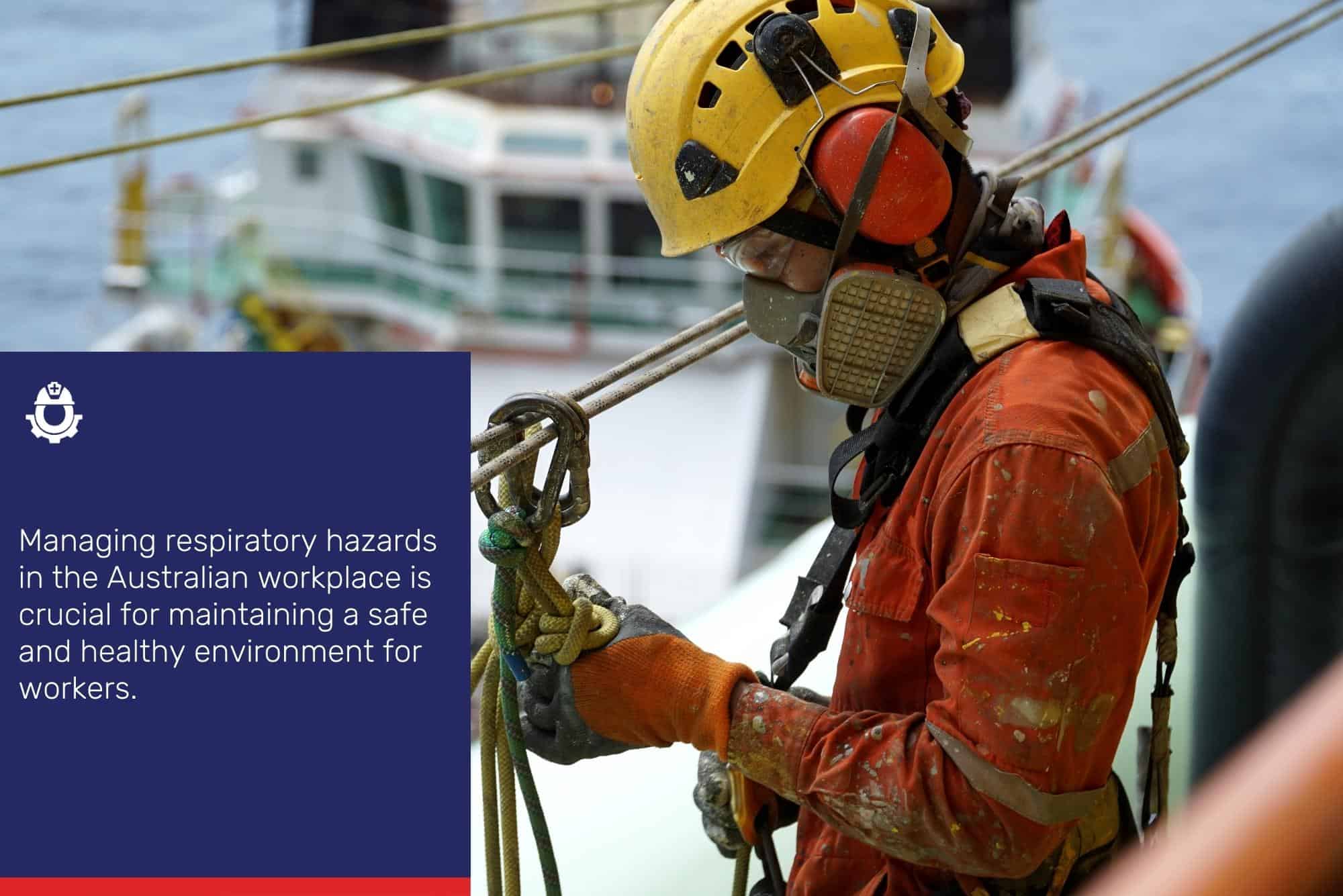
Australian Workplace Safety is in Your Hands
Managing respiratory hazards in the Australian workplace is crucial for maintaining a safe and healthy environment for workers. By identifying and assessing these hazards, implementing engineering controls, administrative controls, and proper respiratory protective equipment, employers can significantly reduce the risk of respiratory illnesses.
With the support of Australian/New Zealand Standards Australian Workplace Safety, companies can ensure that they are effectively addressing this critical aspect of workplace safety. Contact us today to see how we can make your workplace safer for all.
